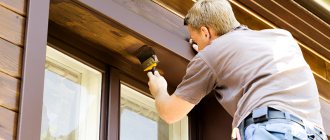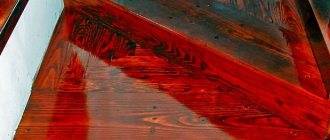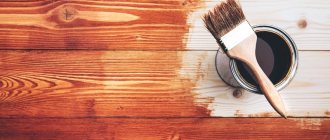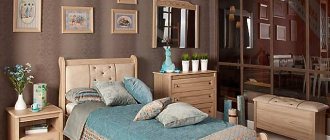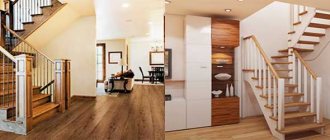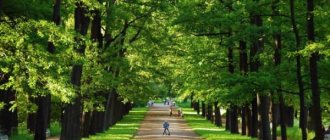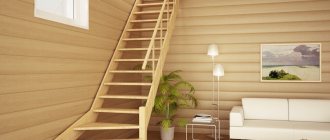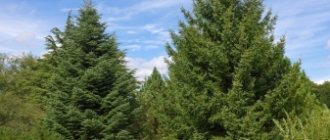Despite the abundance of various artificial materials intended for finishing floor coverings, natural wood has not lost its relevance. A floor or parquet made from first-class boards adds a unique touch to the atmosphere of a home, contributing to the unique harmony of man and nature. Many types of wood are used to construct wooden floors in buildings for various purposes, but the most common is pine, which combines acceptable durability, high aesthetic characteristics and a relatively low price. Naturally, the developer has a question about what kind of varnish to cover the pine floor in order to protect the soft pine wood from the effects of static loads and moisture that inevitably falls on it.
Features of choosing a varnish for a pine floor
It is very important to know how to choose the right varnish for a pine floor. Wooden floors are considered the most environmentally friendly and safe. But in order for them to serve for a long time, they need to be coated with the right compounds and looked after from time to time. This is especially true for pine floorboards. Despite its relative cheapness compared to other wood flooring, it can last for many years without causing any problems. It is only necessary to properly cover such a floor with a high-quality product.
Purpose
Any wooden structures gradually become unusable due to increased air humidity and constant extreme temperatures.
The main task of antiseptics is to protect against the destructive effects of moisture, the proliferation of pathogens, fungus, and mold. Bath treatment products can be purchased in the form of an ointment or solution.
Antiseptic agents reduce the ignition threshold of wood. They are recommended to be applied around the stove to protect surrounding surfaces.
An antiseptic is a chemical that can harm the body. Therefore, before use, it is necessary to study its composition.
What to consider when choosing a product
In order to choose a really good varnish for a pine floor, you need to take into account several factors. The correct choice will depend on them. After all, all compositions for treating floors have their own subtleties of purpose. Let's consider these factors in more detail:
- Be sure to roughly calculate the load that will be placed on the pine floor. The larger it is, the more durable the composition should be chosen. So, if you plan to lay the floor with pine boards in the hallway, kitchen or living room, then the best option for covering the floor would be waterless polyurethane varnish. It is perfectly absorbed into the surface of the coating, and subsequently does not require special care.
- If you plan to cover the floor in a small room where you do not plan to spend a significant amount of time, you can use a cheaper water-based product. This applies not only to storage rooms and utility rooms, but also to guest bedrooms and small offices.
- It is also important to choose the right shade. So, if the pine board completely suits the owners in terms of color, then there is no need to use a tint composition. You can limit yourself to the usual transparent one. But if you want to give the floor a darker or lighter shade, thereby emphasizing the wooden texture, you need to purchase a corresponding, more expensive tint composition.
- But if pine boards are laid on the floor of rooms with high levels of humidity or mechanical stress, it is preferable to cover them with special oil-based water-repellent agents. They will perfectly protect the tree from damage and excess moisture.
But to make the choice even easier, you should consider the main features of all types of varnishes for wooden floors. Today there are only 5 types of them. Each type has both its advantages and disadvantages.
Video description
See how to properly apply the repair mixture using spatulas:
If a flowable, odorless water-based floor varnish is chosen for finishing, the floors are first primed in 1-2 layers, drying each one. In general, a primer will not be superfluous for any varnish. It will make the base less permeable, improve its adhesion to the decorative composition, and reduce varnish consumption.
Conditions for performing painting work
Each coating has its own optimal conditions for application, drying and polymerization. They are indicated in the instructions. Some varnishes can be worked at an air temperature of +5 degrees, for others the minimum temperature is +15 degrees. Therefore, before choosing a varnish for parquet, you need to study the instructions.
An important indicator of the environment is the humidity of the air and the base itself. All varnishes, except those that are water-based, must be applied to a completely dry surface with air humidity not exceeding 80%.
The varnish cannot be applied to floorboards made of wood with natural moisture; they must be allowed to dry Source milano-colori.com
It is also advisable to exclude drafts while the coating dries. An exception is made for toxic acid-curing compounds.
Application rules
To apply varnish, use brushes with natural bristles, velor rollers or special applicators. Use a brush to paint corners and hard-to-reach places, and spread the product over the main surface with a roller or applicator, moving it along the fibers.
The parquet is varnished in 2 or 3 layers.
- Apply the first layer.
- Let it dry.
- Sand to remove raised wood fibers mechanically or manually with fine-grained sandpaper.
Intermediate sanding of parquet Source amazonaws.com
- Vacuum and wipe the floor with a damp cloth.
- Dry again and repeat the varnishing procedure.
Alkyd and water-based compositions
Alkyd varnishes for wood floors are considered the most environmentally friendly, as they are made from natural wood resins. Such varnishes are very good for pine floors, as they can perfectly highlight the texture of the wood, without causing the floors to creak over time. An excellent option for damp rooms and rooms with variable air temperatures.
But such compositions also have their disadvantages. So, the coating will need to be renewed every 3 years, since the composition is not resistant to mechanical damage. And if you apply a thick layer of the product to a pine floor, it may wrinkle a little, which will look unsightly. If you plan to cover a pine floor for several years, so as not to constantly restore it, then it is better not to choose an alkyd product.
Water-based products for wooden floors are distinguished by their relatively low price and good quality. Such products are well absorbed into wood and harden quickly. And, most importantly, they do not emit virtually any harmful substances into the air. As a result, you can get a beautiful shiny coating that you can safely walk on just a few hours after application.
However, water-based varnish is completely unsuitable for pine floors with visible gaps between the boards. Penetrating into them, the product will subsequently cause creaking floors.
To prevent this from happening, you should first seal the cracks with putty, then cover the surface with a deep penetration primer. As a result, all the work will not be as cheap as it might seem at first glance.
Painting a wooden pine staircase
A staircase made of pine differs from products made from other types of wood in that before painting it requires additional processing, or rather, the product must be deresined.
A number of manipulations should be carried out for the following reasons:
- The resin that comes out of the wood creates a film on the surface. Because of it, the paint layer does not penetrate into the fibers, which can affect the condition of the staircase during operation.
- The areas where the resin is released darken over time and look unsightly.
- A resinous mark on the surface is difficult to cover with paint. Varnish and other products apply unevenly, and the painting results are of poor quality.
Resin removal of wood
For these works you will need all kinds of solvents.
How to proceed:
- Apply the product to the surface of steps and railings with a brush.
- After treatment, wipe the surface with warm water.
- Leave until the product is completely dry.
After the procedure, the wood is ready for painting.
How to paint a pine staircase?
- Enamel dyes are considered the best option for processing a flight of stairs made of pine.
- In diluted form, when applied to wood, the structure of the wood species will remain visible.
- If an undiluted mixture is used, the paint will completely hide the structure.
- Before applying paint to the surface, the stairs must be cleared of dust and debris.
- Alkyd paints are easy to apply and dry quickly.
- Pigmented dyes will perfectly hide defects and chips on the steps.
- Urethane - alkyd liquids are suitable for application to boards that have previously been painted.
Polyurethane, primer and acrylic mixtures
An excellent choice for pine plank floors is polyurethane varnish. This is an expensive product, but as a result you can get an even coating even in cases where the boards do not fit tightly together. This product has increased resistance to mechanical stress due to the acrylic and urethane contained in it.
You won’t have to wait long for this composition to harden on a pine floor, since even in conditions of humidity and high temperature, this product is completely fixed on the surface after 3 hours. The only drawback is that you will need to ventilate the room well after work.
Primer varnish is most often used as a topcoat for pine floorboards. The fact is that the varnish perfectly fixes the base shade and is a good protective agent against ultraviolet rays. As a result, the floor boards will not fade or change color for a long time.
The ideal option is to coat the plank floor with a primer varnish over a cheaper tint varnish. This will provide not only additional protection for the floorboard, but will also improve its decorative appearance, which is also important.
Acrylic varnish is perhaps the only product that is not recommended for use on pine board floors. Such varnishes are very toxic, have a pungent odor and take a long time to dry.
Moreover, to achieve an average level of wear resistance, it is necessary to apply the varnish intermittently in several layers, which increases the consumption of the product.
So, the features of choosing a varnish for a pine floor are considered. You can choose any composition except acrylic, focusing on the main characteristics of the room and floor. It is important to calculate in advance the required amount of product and cost. This will allow you to immediately buy the right amount of product at an affordable price.
Work technology
Tree to tree - discord
If you contact a specialized company to find out the cost of painting a wooden staircase, you will be unpleasantly surprised at a fairly substantial amount.
That is why many of our compatriots have a desire to do the work with their own hands - especially since it is not particularly difficult. First you need to pay close attention to the wood from which the stairs are made:
- Coniferous species (spruce, pine, cedar) have a high content of resinous substances, and therefore the paint on them holds somewhat worse.
- Hardwoods are characterized by sufficient density, and therefore it is easier to prepare them for painting.
- Fresh wood has a large number of open pores, which leads to abundant absorption of liquid components of varnishes and enamels.
- Old and dense wood should be properly primed, otherwise the paint will simply run off the stairs.
Preparing the stairs for painting
In any case, in order for the paint to lay flat and hold securely, the stairs must be carefully prepared:
At the first stage, we use putty to fill all the cracks into which paint may flow. To achieve the best result, you should use a special mixture for wood. (see also Oak stairs - manufacturing and assembly features)
Advice! To prevent putty stains from being visible through the varnish, its shade should be selected as close as possible to the color of the wood.
After the mixture has dried, we sand the putty with sandpaper so that we get a perfectly smooth surface.
Careful sanding will ensure a perfectly smooth surface.
- Ideally, you should wait two to three days after the first grinding and then repeat the operations. This will ensure the most complete polymerization of the putty mass.
- After completing the treatment, we remove dust from the surface, since even the smallest sawdust under a layer of paint or varnish will appear very prominently.
- We prime the stairs using a brush or roller, applying the primer twice with a break of 24 hours.
If possible, parts can be processed separately
Painting the stairs
Painting of wooden stairs begins after the second coat of primer has completely dried.
Before starting work, thoroughly mix the paint or dilute the tinting component in a transparent varnish (the instructions from the manufacturer will tell you how to do this).
Apply paint with a roller to the flat part of the steps
To apply the paint composition you can use:
- Brushes are wide, with natural or artificial bristles.
- Rollers.
- Paint sprayers.
- Spray guns.
Spray can be used
Below are tips specifically for using a brush, since this method is the most accessible:
- We start painting with the largest areas - railings, steps, stringers, etc. It is also worth moving from top to bottom, making sure that the flowing paint does not harden in drops.
- Place a small amount of paint on the brush. We remove the excess by brushing either along the edge of the jar or along a specially stretched rubber band around the neck.
- Holding the brush at an angle of about 45° to the surface to be painted, distribute the paint or varnish evenly.
- For the highest quality coating, you can apply from 2-3 to 5-6 layers. We lay each next layer only after the previous one has completely dried.
- When using tinted varnish, apply the darkest mixture to the wooden base. We make the top layers of varnish on the stairs almost transparent - this way we will give the stairs depth and emphasize the texture of the wood.
Photo of the varnished surface
The paint should dry at room temperature and normal humidity. Heat or cold will cause microcracks to appear on the surface of the stairs, which will very soon expand and cause the paint to peel.
We hope that thanks to the information presented in the article, you learned how to paint a wooden staircase as efficiently as possible. (see also Single-flight staircase: a simple solution) Believe me, such work does not present any special difficulties, and if you don’t rush, then very soon the steps in the house will shine with fresh colors or acquire a noble shine of varnish. In the video presented in this article you will find additional information on this topic.
How to choose a floor varnish?
A wooden floor is a warmth and comfort that will always be welcome in your home. And a varnished surface with an original natural pattern and texture looks much more beautiful than paint.
It's hard to argue with these statements. But what varnish to choose for wood floors? There are many coating compositions, so it can be difficult to decide.
Of course, buying a laminate will allow you not to think about choosing a topcoat. But in most other cases, the wood texture requires treatment. Varnish gives the wooden surface additional strength and resistance to damage, protects against cracks and fungus.
Briefly about the main thing
When choosing which parquet varnish is best for the floor in a house, bathhouse or on a terrace, you need to take into account many factors. The main ones are the mechanical load on the floor covering and the conditions under which it is used. For living rooms with a normal microclimate and low traffic, any water-based or organic-based varnishes with average wear resistance - acrylic, alkyd, urethane - are suitable. Where traffic is high, it is better to use durable polyurethane compounds. And for outdoor coatings, epoxy varnish is the best choice.
What types of floor varnishes are there?
Surely, you have already heard about water-soluble and solvent-soluble varnishes. The name depends on the type of solvent used in them. Organosoluble compounds are highly toxic, so you should only work with them in a respirator.
Also, the type of varnish depends on the resin that was added to the composition during manufacture. Most often found on sale:
- Polyurethane varnishes. They are considered the best and therefore cost more. These coatings provide elasticity and durability, which are combined with environmental friendliness.
- Polyurethane-acrylic varnishes. These compositions are less durable, but have improved spreadability. They are only water-soluble and therefore non-toxic. Their cost is lower than the first type. Just keep in mind that they will not be as durable as polyurethane ones.
- Urethane varnishes. They can be called competitors of polyurethane. These compounds have good strength, withstand impacts and are quite elastic. The only negative is that these varnishes are inferior to the first ones in terms of abrasion resistance.
- Urethane-alkyd varnishes. These compounds combine resistance to mechanical damage and friction.
- Alkyd varnishes. Very popular because they dry quickly. However, these compounds are less elastic and durable.
- Epoxy and urea-formaldehyde varnishes. They are durable, but very toxic.
Type of wood and type of varnish
What type of wood is your floor or parquet made of? The choice of the desired varnish composition directly depends on the type of wood.
Choosing a varnish for larch floors
For this tree, experts advise using water-soluble alkyd and polyurethane varnishes. Since larch itself has a dense structure and is highly durable, two layers of coating are sufficient. Pre-treatment, in most cases, is not required.
Choosing varnish for pine floors
Conifers have a softer structure. Therefore, it is worth making sure that the varnish creates a durable and reliable coating. Polyurethane, epoxy and urethane varnishes are best. They should be applied in several layers.
Choosing a varnish for beech, ash and oak floors
For deciduous trees such as oak, ash and beech, experts advise using polyurethane or alkyd varnishes. But before applying the coating, the wood is primed with special solutions (primer mixtures).
Exotic breeds
We are talking about varieties that contain essential oils. These rocks are first treated with neutralizers, then primed, and then varnished. The choice of the composition of the finishing coating in this case depends on the conditions that will be discussed below.
Protecting joists from insect damage
Often, owners of wooden houses are faced with a big problem - insect pests that settle in wood cause them a lot of trouble. This phenomenon must definitely be combated. Since the place where the logs are located is always warm, insects prefer to settle and breed there. Entire colonies of pests can render floors unusable and require major repairs.
To prevent this, it is necessary to treat the logs using special protective agents. As practice has shown, the most effective and proven method is the use of resin. It still needs to be prepared for application before use.
The resin is heated by placing it in a metal container. After it softens, you can begin to work. Impregnation for floor joists is applied using a paint brush. After completing this procedure, no pest can penetrate the wood structure. The fact is that such a durable layer almost does not collapse over time.
Which varnish to choose for a wooden floor in a nursery, kitchen, bathhouse...
The choice of floor varnish, first of all, should be made based on the permissible degree of toxicity in a particular room. For example, in a children's room, only water-soluble compounds marked EN 71.3 are allowed. This designation indicates that the drug meets European safety standards.
The second rule on which the choice of floor varnish depends is related to the load on the surface. If this is a public establishment or any room that receives many guests, a varnish with increased strength and abrasion resistance is needed.
For rooms with high humidity, it is worth choosing moisture-resistant compounds. It would be good if there were antifungal additives for mold. This is especially true in the kitchen and bathhouse.
If you are going to varnish your bathhouse floor, choose non-toxic, water-soluble options. It is desirable that the composition contains fire retardant components, that is, fire-fighting substances.
The floors in enclosed verandas and summer houses must be covered with frost-resistant varnishes so that low temperatures in winter do not cause the surface to become covered with cracks. On open balconies and gazebos, it is preferable to use special varnishes that are not afraid of either rain or snow. These compositions are often found under the names deck or boat.
You can also choose a varnish based on aesthetic preferences. There are both very shiny glossy compositions and matte ones that delicately emphasize the beauty of the wood pattern. In addition to colorless coatings, there are also tinted ones. They will add a special charm and also help the floor fit into the overall interior.
After purchasing the varnish, do not forget to buy tools for application, such as a paint roller or brush, and the necessary products for pre-treating the wood.
Choosing a floor varnish is easy to do if you know all the tips listed above. Before deciding on a purchase, carefully study the composition and remember the recommendations. For each room and type of wood, you can choose several good options that will help your floor shine and sparkle with newness for a long time!
Wear-resistant, moisture-resistant floor varnish - which one to choose? When it comes to choosing flooring in a private home or public place, they often choose wood flooring. This material is very beautiful, durable, practical, and also environmentally friendly and always looks modern, stylish, noble, even though it is a plank floor, parquet board or piece parquet.
The floor in an office or home is constantly exposed to stress, and for this reason reliable protection is required - a special coating that will help preserve the original structure, prevent damage and loss of color, and add attractiveness.
Answers 20
In a new building, as a rule, the floor is less level and it is cheaper to level it with a screed. a wooden floor is an order of magnitude more expensive, both in material and in work. So I believe that they decided to make it wooden for the reason that there would be sound insulation, which is not found in most new buildings. It is better to regulate the difference with the thickness of the plywood. take 18 mm plywood. (I don’t know what the thickness of the parquet board and tiles you choose is. But in place where the tiles will be, instead of plywood, you need to screw GVL; there are three types of thickness, there are different thicknesses of GVL, you can increase it with glue. GVL should be lower in level than the plywood by about 5mm- 7mm good luck to you
It is necessary to lay plywood under the parquet board, and level the difference with the wooden covering with a screed
You can fill the floor perfectly evenly and lay a board or parquet directly on the screed instead of the joists, but this is more expensive. catching the difference between the tiles is not necessarily the easiest way to cover the difference with a rounded aluminum threshold; it will be invisible that it is there. in most cases, you still can’t do without a threshold. if you need one level, then option 1, invite a generalist, he will shoot the entire level with a laser or hydro level and only then will he be able to tell you where to raise it and how much. The same master must do it, if another one comes, it may turn out differently.
What will you cover the boards with? A screed is poured under the tiles and the tiles are laid at the level of the boards. As for cheapness, the difference is small, but parquet boards are more aesthetically pleasing. By the way, the parquet board is also laid on a screed or poured floor with a backing.
All differences are laid down at the screed stage. What kind of lags? What century do you live in? There has been a massive high-readiness board for a long time. It is laid on plywood, like parquet, but the boards are large.
Anyway, first decide on the height of the wooden floors, and then drive the screed where the tiles will be 1.5-2 cm below the level of the top surface of the finished floor
Probably installing a parquet board on a screed is faster in terms of time, and the increase in cost is small.
Solid wood board is for sale, to lay it you need to level the floor, for example with a self-leveling floor or cement screed, lay plywood on glue and dowels, the board is laid on the plywood according to technology. If you have any questions please call. 89055916364.
hi, I have 18 years of work experience in the USA. The best installation of hardwood floors. This is when floors are nailed onto plywood with staples using a special gun and an air compressor. These floors usually do not wear out and last for many years. I've been doing this work for many years, no complaints. It is also possible to install another wooden floor, which is assembled as a (pergo) laminate floor
General information
Such a protective coating can be called a moisture-resistant, wear-resistant floor varnish, which, due to its chemical composition and qualities, can be applied to both concrete and wooden floors. There is a wide variety of building materials and paint coatings on the modern market, which is why buyers cannot make a choice for a long time.
How to choose a varnish
When choosing a product (varnish) to cover a floor, the buyer usually tries to catch three birds with one stone:
- Give the flooring a noble color.
- Create a protective layer that will prevent damage to the wood.
- Choose a varnish that will match the interior.
Moisture resistance and wear resistance of varnish for a wooden floor are of great importance, and when choosing it for protection, consider the following points:
- Possibility of post-processing.
- Has the wood been pre-prepared and treated?
- Tree species.
- Compatible with old paintwork.
- Terms of Use.
Regarding operating conditions, you should pay attention to how much traffic there will be in the room and what level of humidity. For heavy loads, you should choose a floor varnish that is moisture-resistant and wear-resistant.
When reading the composition, you can determine the protective properties of the varnish, for example, alkyd floor varnish is a kind of protector against high levels of humidity, alkyne-urea varnish makes the coating durable and reliable, petroleum-polymer or oil-based is excellent for places with heavy loads and traffic.
Parquet varnish, which is used to cover wooden floors, is extremely popular among buyers - it can be acrylic, alkyd and water-based.
When choosing a floor varnish, you should decide which one will be best for you based on the three criteria described above, as well as on gloss and shade.
An equally important role is played by the lighting of the room, architectural features, color of the ceiling and walls, since it is precisely for these data that you can choose a varnish of a certain color, as well as choose a matte or glossy sheen according to your preference.
For a light floor, matte floor varnish is perfect, where there is good lighting and the room is spacious - a wonderful shade and shine will highlight the beauty of the wood. It is better to choose a glossy floor in rooms with poor lighting and small size, since gloss can visually add volume and reflect light.
Due to the development of modern technologies, there are also floor varnishes that also have a certain shade. Yes, these are colored floor varnishes that appeared relatively recently, but the designers immediately liked the interesting solution of the manufacturers and was appreciated, giving them the opportunity to realize the best and newfangled ideas.
DIY staircase painting
Many people are concerned about the question: how to properly paint a staircase in a wooden house? To create a beautiful and durable coating, it is necessary not only to choose a suitable coloring agent, but also to prepare the surface well. A wooden staircase, like any other wooden surface, requires careful preparation.
Preparatory work
- If the staircase is made of coniferous wood, before painting it is necessary to remove excess resin, which prevents the absorption of paint. There are special tools designed for these purposes.
- If there is an old paint coating, the stairs must be treated with a remover, and then the swollen paint must be removed with a spatula.
- The main structural elements are sanded first with coarse-grained and then fine-grained sandpaper. You can use a grinder with a sanding attachment. Initially, the surface is treated with abrasive No. 60-80, then a nozzle No. 120-150 is used. Particular care must be taken to sand steps, railings and flights - places that wear down faster than others and lose their appearance.
- After cleaning the surface from wood dust, it is necessary to putty all existing cracks and cracks. It is advisable to choose putty to match the color of the wood. If the gap is deep enough, you can close the hole with a sliver of wood previously coated with PVA glue.
- Next, final polishing is done with fine sandpaper. After sanding, you should get a perfectly smooth surface without knots or irregularities.
- A primer is applied to the treated and cleaned surface with a roller or brush. A day after the first layer has completely dried, the stairs are re-treated with antiseptic primer.
Painting the stairs
The stairs are painted from top to bottom. First, large areas are painted - steps, railings and stringers. If you need to use it, you can first paint not all the steps, but after one, and after drying, paint the remaining ones.
Before applying the dye, it must be mixed well. If the paint is very thick, it can be thinned a little with a solvent.
Thick paints adhere better to the surface when using bristle brushes. It is better to apply liquid products using flutes. When painting with a brush, it should be held at an angle of 45 degrees to the surface.
The stairs are painted in 2-3 layers. In some cases, a high-quality coating requires at least 5 layers. A new layer is always applied after the previous one has completely dried.
Which varnish to choose for your dacha
Thanks to the fact that caring manufacturers have created varnish for interior and exterior use, buyers have the opportunity to create a practical and original-looking interior not only in their apartment, but also in their country house.
Wear-resistant and moisture-resistant varnish for pine floors
A special feature of this type of wood is its ability to bend under pressure and its softness. Because of this, the floor may be deformed. For this reason, the varnish for such a floor in the country should be stripped so that the type of wood, as well as the temperature and humidity level are taken into account.
Please note that for those wood species that are soft, you cannot use parquet varnish - after application, a hard film will appear on the wood, which, when using a pine floor, will destroy the structure of the wood from the inside.
The softwood will begin to sag, but the treated hard surface will remain in place. A void will begin to form between the coating and the wood, and over time, as the void increases, cracks may begin to appear in the wood.
When choosing a varnish for a pine floor, pay attention to the special marks on the can. It is advisable to opt for a jar that has an inscription for floorboards and soft wood.
Another interesting feature when covering softwood is the application method. First, the parquet should be primed, and the pine wood floor varnish itself should be applied to the boards. There is no need to prime pine boards, since the base in the form of the first layer of varnish will be used to apply the coating.
It is important that for pine floors the varnishes must be elastic.
When performing outdoor work, the product must have properties such as protecting the wood from wind, moisture, sunlight and temperature changes.
Floor varnish Tikkurila (Finnish)
This type of varnish is a wear-resistant and reliable coating for absolutely every type of wood, which can withstand high humidity and temperature changes. It can be used for both interior and exterior decoration, for example, to cover the floor of a veranda or gazebo, since this varnish is also frost-resistant.
Those products that are designed for external use can be used for:
Yacht varnish
This coating was developed to protect the wooden hulls of yachts and other wooden watercraft, which is why it got its name – yacht varnish. Thanks to its excellent water-repellent properties, resistance to salt water and aggressive environments, the product has earned a good reputation in the market and has begun to be used for household needs.
Based on their composition, yacht varnishes are divided into urethane-alkyd and alkyd. For the floor, yacht varnish has a slightly different chemical composition than those varnishes that are used specifically for the body of equipment.
Urethane-alkyd varnish is much safer for human health, since it contains a much lower concentration of solvents than a simple yacht varnish. It contains more alkyds, which allow the floor to dry out quickly, and wood treated with this product is protected from damage and fungus.
If we talk about acrylate yacht coating for wood, its content of toxic substances is lower due to water solubility, but this product is in no way suitable for marine equipment. It is used only for the floor, although it is called yacht.
Wear-resistant and moisture-resistant water-based floor varnishes
Water-based varnish is the most environmentally friendly product, as it contains no toxic elements and almost no odor. Its composition varies, sometimes in addition to water there are also emulsifiers and solvents, but at low concentrations the toxicity of the product is minimal.
The disadvantage of this varnish is that it takes a long time to dry, unlike other products. Also, the water that is included in the composition can easily get into the floor cracks, and this is very undesirable, since wooden floorboards can be deformed and, as a result, creak. To avoid this, apply a primer to the floor under the water-based varnish.
Another drawback is the low level of wear resistance. Most manufacturers add various additives to the composition to improve adhesive properties.
But the advantage of this varnish is that it is odorless and protects the wood from ignition. Water-based acrylic varnishes also do not contain various solvents; they are safe and excellent for interior decoration. When treating a room with such a coating, you can ensure that the natural color of the wood is preserved and the texture of the floor is emphasized. For a durable coating, it is advisable to apply this paint in several layers.
And although the coating takes a long time to dry (at least 2 weeks), the result is worth it - everyone who has good taste and cares about the health of themselves and their loved ones will like it.
Disadvantage: low resistance to temperature changes and high humidity. Now you can find many varieties of varnish, which are based on acrylic. Acrylic-based color coating, namely acrylic resin, is extremely popular. It has some additives that enhance its protective properties.
Anhydrous formulations
Waterless floor varnishes (polyurethane) can withstand high loads and have high adhesive properties. For this reason, these compounds are recommended even for processing in industrial premises where there will be heavy loads on the floor.
For concrete, self-leveling and even polymer floors, you can still use polyurethane varnish. It is used for reliable coating with a high level of protection of natural stone and valuable wood.
But the composition of polyurethane coatings can be two-component or one-component, and also contain solvents, acrylic and urethane.
At the moment, this is the best wear-resistant floor varnish. If you are faced with a choice of what type of varnish to cover OSB boards on the floor, the choice is obvious - the most aesthetic and durable of all - polyurethane.
Application rules
You can apply varnish using a roller, a special brush, or a professional-looking device that helps achieve an even coat.
Among the professional tools, a pouring machine and a squeegee can be used, which will give an even, fast and high-quality application of varnish.
It is important that with the right selection of tools you will reduce material costs and get a perfectly even coating.
So, when choosing a floor varnish for yourself, you should take into account the fact that each product has its own pros and cons.
How to paint
To process pine stairs, the following are used:
- Impregnations with antiseptic and fire retardant properties. They are made on a water, alcohol, acrylic, wax base.
- Stains (stains) for tinting wood. Pigmented impregnations do not form a surface layer, but penetrate into the fibers and make the wood texture expressive. They are made on a water, alcohol, acrylic, oil, wax, and chemical basis.
- Polishes. A transparent coating is applied to the wood, preserving its natural color and pattern, providing a radiant glossy and semi-gloss shine. Can be applied to a layer of paint or varnish to enhance the decorative effect of the coating. It is made on a water, alkyd, oil, wax base.
- Lucky. Transparent material that does not hide the natural appearance of wood. Creates a durable protective layer. It is made on an oil, alcohol, nitrocellulose base. Apply over stain.
- Enamels. They are pigmented varnishes. They form a protective colorless or decorative, glossy or matte hard layer. They have a slight odor and dry quickly.
- Paints. Create a decorative protective layer. Selected by color to match the overall interior design. They are made on an alkyd, oil, acrylic base. They mask minor wood defects and are applied to protective impregnation and previously painted surfaces.
To ensure a high-quality and durable coating, cover the wood only with high-quality materials purchased in specialized stores or from manufacturers.
Which painting material to choose: comparison table
| Types of paints | Advantages | Flaws |
| Oily | Moisture-resistant, rich in color, creates a reliable protective film | They take a long time to dry, do not “breathe”, have a strong toxic odor, lose their shine in areas of wear, are afraid of alkalis, and can peel off over time |
| Enamels | Moisture resistant, form the most durable and smooth surface, dry quickly, lie flat | They provide only a matte surface and are intended for interior use only. |
| Acrylic, acrylate | Water-repellent, breathable, water-soluble, quick-drying, low odor, lays flat | They only provide a matte surface. |
| Alkyd | Moisture-resistant, dry quickly, form a smooth surface with a polishing effect | Contain solvents, have a pungent odor that lingers in the room for some time, a short-lived coating, and may peel off over time |

